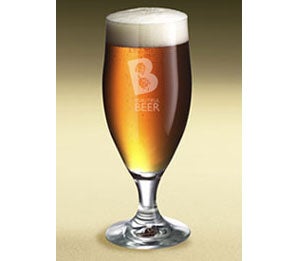We'll drink to that: pubs hail the return of real ale
Ailing brewers raise a glass as cask beer sales rise for first time since 198

Your support helps us to tell the story
This election is still a dead heat, according to most polls. In a fight with such wafer-thin margins, we need reporters on the ground talking to the people Trump and Harris are courting. Your support allows us to keep sending journalists to the story.
The Independent is trusted by 27 million Americans from across the entire political spectrum every month. Unlike many other quality news outlets, we choose not to lock you out of our reporting and analysis with paywalls. But quality journalism must still be paid for.
Help us keep bring these critical stories to light. Your support makes all the difference.
After years in the wilderness, fans and brewers of Britain's national drink have a perfect excuse for a party: consumption of bitter has risen for the first time in nearly three decades.
Drinkers sank 2.3 million more pints of cask beer in the first half of this year than in the first half of 2008, an industry report reveals. The last time full-year real-ale consumption rose was in 1982, when the Human League's Don't You Want Me topped the new-year singles chart and Ronald Reagan was the US President. The 1 per cent rise could, experts believe, mark the reversal of a long-term trend towards mass-produced lager backed by slick advertising campaigns.
Market researchers at AC Nielsen collected the figures for this year's Cask Ale Report, commissioned by a collection of regional breweries and the Campaign for Real Ale (Camra). According to the report, the number barrels of beer consumed rose from 817,000 to 825,000 between the first halves of 2008 and 2009, an increase from 235 million to 237 million pints. The report said 400,000 new drinkers tried cask ales last year and the number of breweries making them – 660 – was the highest for 60 years. Real ale's profile has also been boosted by two new TV series about beer: Oz and James Drink to Britain and Neil Morrissey's Risky Business, it added.
"Turnaround stories don't get much better than cask beer's," said Pete Brown, the beer blogger who wrote the report."In a shrinking on-trade beer market, cask is the only category to show growth, albeit modest, of 1 per cent in the first half of 2009. What's most important for Britain's licensees is that there's compelling evidence to show that cask beer can offer them a lifeline out of the recession."
Mr Brown wrote that cask-ale drinkers are typically more affluent than other beer drinkers."They have reached a life stage where they can afford to visit the pub more often – 40 per cent of them visit at least once a week, compared with just 23 per cent of non-cask drinkers. And they spend more when they're there." Mr Brown added: "Sure, it's not right for every single pub, but for those that can keep and serve it well, and attract the right customers, cask beer can help to lift them out of the trading downturn."
The British Beer and Pub Association (BBPA) said the figures marked a real change in drinkers' habits and credited an increasing interest in local food and drink for the revival. Many best-selling bitters are brewed regionally and new experimental milds and "winter warmers" are made by local or micro-breweries. Although pubs are closing at a record rate, 71 breweries have opened in the past year to slake a growing thirst for local, more complex brews.
Mark Hastings, the communications director of the BBPA, added: "It's an encouraging sign for the beer sector. There has been a renaissance in local beer and local beer is always going to be cask beer."
Unlike "brewery-conditioned bitters", cask ales ferment for a second time in the barrel and are served without being pumped with carbon dioxide,as lagers are. Cask beer is made using only malted barley and water seasoned by hops and fermented by yeast. It must be kept carefully in a cellar to allow its flavour to develop and, according to the report, many pub-goers believe the availability and quality of cask ales reflects a pub's overall standards.
"Keeping cask in good condition requires care and attention, the thinking goes, so the licensee must also know what he's doing with other drinks, food and service in the pub," the report said.
By contrast, lagers have continued to fall in popularity along with beer generally, with all sales in pubs tumbling by 16 million pints a day since their high point in 1979. Britain's beer market is worth £18.3bn a year, with real ale worth around £2bn.
Join our commenting forum
Join thought-provoking conversations, follow other Independent readers and see their replies
Comments